“Real couture clients view buying clothes completely differently from RTW. They build a wardrobe of couture clothes over time and expect them to have longevity. They rarely say “I am going to a wedding in 6 weeks time and I need a dress” – they expect to already have a good dress that they are happy to wear again.”
– Jon Moore, couturier
Of all the things I discussed with couturier Jon Moore on a spring day in the UK countryside, that was the statement that really stuck with me. Says a lot about sustainability don’t you think? Being able to sew our own clothes means that we can make something to wear for an occasion the next day or next week. But should that be the norm? Are we viewing this from a consumerist lens in terms of being able to sew up a garment at speed for an immediate need? Or are we practising our sewing hobby with care?
I have often thought of couture as being the ultimate in slow sewing and sustainability, if you are privileged enough to be in it. But whilst the majority of us do not have the luxury of commissioning clothes to be made for us, it doesn’t mean that we can’t think of the clothes we make as investment pieces and long term projects. (Though I’m not suggesting that a jersey t shirt when you have young children needs to be a long term investment!).
What is couture?
Couture is one of those widely (mis)used terms that is interpreted in many different ways. As a word, couture is simply French for sewing. Jon tells me that one way to think about is that it is a garment individually designed and made for a private client – “you can have a couture garment that is completely machined because of the way its been conceived.” (note however that the term Haute Couture is a protected term in France – there is certain criteria set that must be fulfilled). I often think of wonderful luxurious garments with beautiful finishes and detail requiring a huge amount of hand sewing. Certainly Jon’s work is an example of this. A tailored jacket or a silk dress takes him 10 working days, and a pair of trousers is 3-4 days work. That doesn’t include fittings or traipsing around London looking for a particular fabric in a specific shade or burgundy to match a client request.
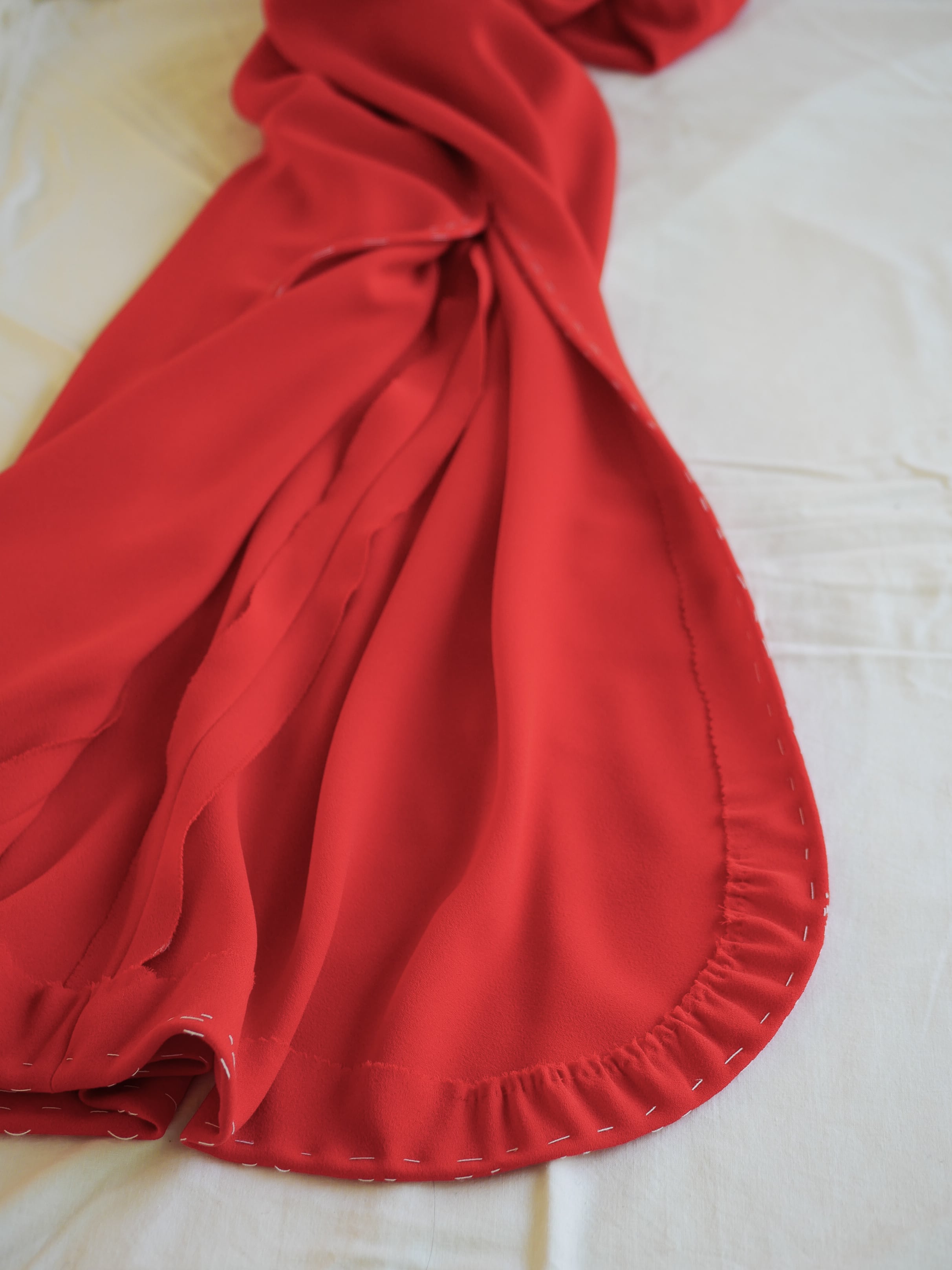
For the smoothest possible finish, the hem on this thick polyester crepe dress is pinked, then gathered at the curved section and blind stitched down
As former Design Director for royal couture house Hardy Amies and later a freelance couturier, Jon Moore is more than qualified to give insights into this exclusive world. Fortunately for us home sewers who want to learn couture techniques, Jon has another career running courses in the UK and also in Canada. A most generous soul, I spent the day in his studio and he showed me the innards of some garments he has working on, walked me through his way of making a tailored jacket, and fit one of his patterns for me for my upcoming 100 hour tailoring project (more on that another day!).
Below is the first part of our chat in which Jon discusses fashion education in the 1970s, luxury fashion houses, and working freelance. Jon is full of charming anecdotes – enjoy!
Getting started in fashion and couture
My mother was a dressmaker and teacher, so I thought that everyone had dress stands and pins and needles all over the house. I didn’t think of becoming a fashion designer until I met a theatre and costume designer who pointed me in that direction. My training was at a commercial fashion course at Kingston. People sneered a little at the time on the “commercial” aspect but it was a marvellous arrangement covering both fashion and industry, which go hand in hand.
At college we draped everything on the stand. The first project I ever did was to make a cotton dress with paper. Putting a seam into a flat piece of fabric and putting it onto the stand to make a 3D object – that is the magic moment which still inspires me today. I try not to construct clothes with a lot of seams as I like the fabric to do the talking. If I can get shape without seams, then I’m delighted! Working on the bias allows more for this kind of flexibility.
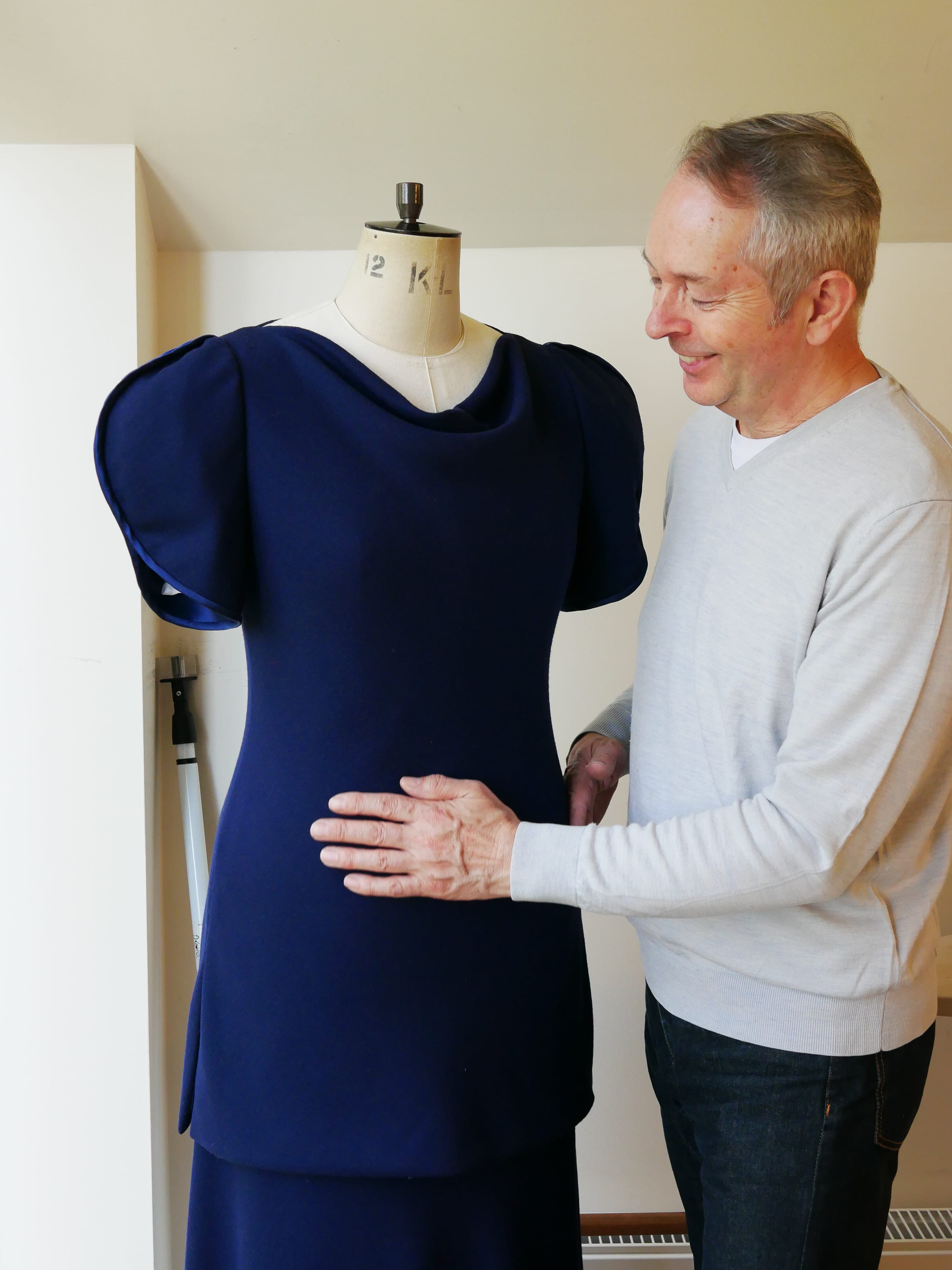
Smoothing out wrinkles on a two piece outfit in wool crepe – notice there are no darts used here for bust shaping
Valentino scouts who came to the college offered me a job at the end of my first year, and that is how I got into couture. My final collection at the end of college was all very luxurious and couture. Fabrics covered in rhinestones and fur coats and all that. But at some point I realised I didn’t want to work for Valentino. In an effort to build my portfolio, I ended up making sportswear just to prove I could do other things! But moving away from couture wasn’t to be. My job after Valentino was at Hardy Amies and that lasted 22 years. I had also interviewed at Dior, but with the arrogance of youth I told my college tutor I didn’t want to work there either.
Fashion is business
My first job at Hardy Amies was as Studio Assistant, picking up pins and making cups of tea. When I became Design Director after 16 years, I was in charge of 5 workrooms, a shop on the ground floor, buying for the shop, designing 4 collections a year, sourcing fabrics for the collections, seeing private clients, designing clothes for them… and making sure there were loo rolls in the bathroom.
The business side of the job, talking to accountants and things like that, was really important. Whilst fashion is creative, fashion is also business. There is always a financial brain next to the creative brain and these days fashion is more business, branding and product placement rather than simply product design. Back in the 1970s every design house had a designer who ran it. Calvin Klein was Calvin Klein, Valentino was Valentino, Bruce Oldfield was Bruce. The designer used to be at the top of the tree. But times have changed and now it is advertising, brand and finance that drives fashion.
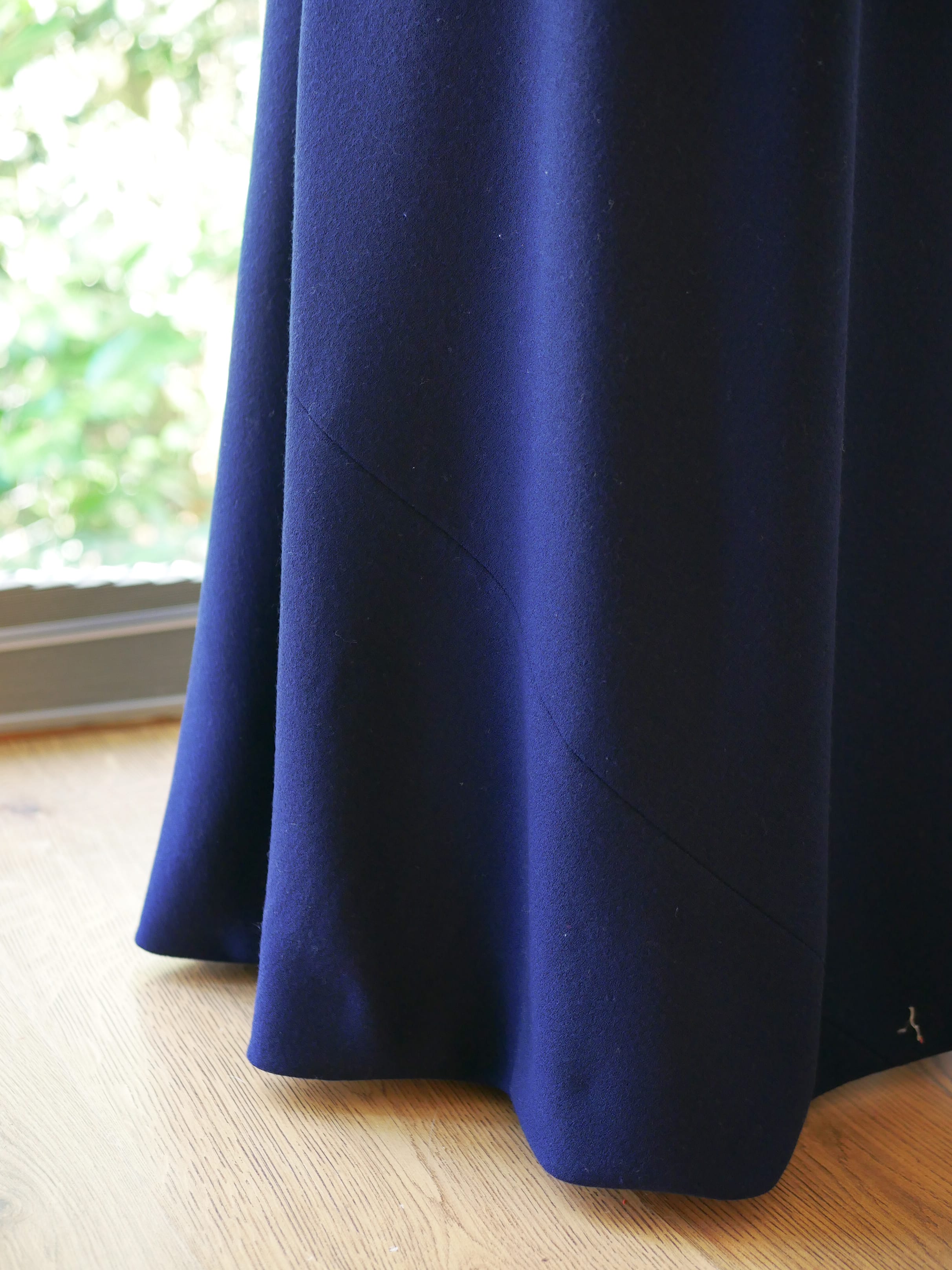
The fabric used for this skirt was insufficiently wide for the pattern. You can see a diagonal seam on bottom of this skirt where it has been pieced together. A nod to a past era when fabric was limited and piecing in this manner was commonplace.
Freelance life
After 22 years at Hardy Amies I set up my own business doing what I loved best – making beautiful clothes. I kept it really small because I wanted to do the sewing myself, rather than be just the salesman. For 16 years it was fabulous to run a solo business with only 1 part time assistant.
There was a lot of variety in the clothes I made. But occasionally I did get large orders for the same thing. One client ordered 16 silk tunic tops for her new work wardrobe. There were all to be in the same style but in different colours. You can imagine that was slightly soul destroying. By the time I made tunic top number 14 it was near perfection, but 15 and 16 went off a bit as it was rather difficult to maintain the level I was working at! To complete the order I made around 3 a fortnight.
Couture design and construction
One of the principles at Hardy Amies was to honour thy fabric, and use its beauty to create the design. You put the fabric on the stand and decide what it is going to become. You do not make a drawing and then look for a fabric that fits the bill. If you have taffeta, make a dress with structure. If you have chiffon, make a soft drapey dress.
My clients have to like my style for me to make clothes for them, as its a collaborative process. My designs are aimed to look classic and amazing now and in 20 years – they are investment pieces. I once made a black strapless silk crepe dress for a client. It sounds dull but it was unusual in that it was for a client who had a very full bust and never wore anything strapless. 25 years later I ran into her in London and she told me that she wore that dress the night before! That pleased me very much.
More often than not I would receive orders from my clients at the end of summer – “I’ve been thinking… I’d like a new coat for winter, spring, a pair of trousers…” Then I’d do a set of sketches and match them with fabric samples. Clients generally order multiple things. The timespan for delivering something is long – up to 9-12 months – they will be delivered whenever they are ready.
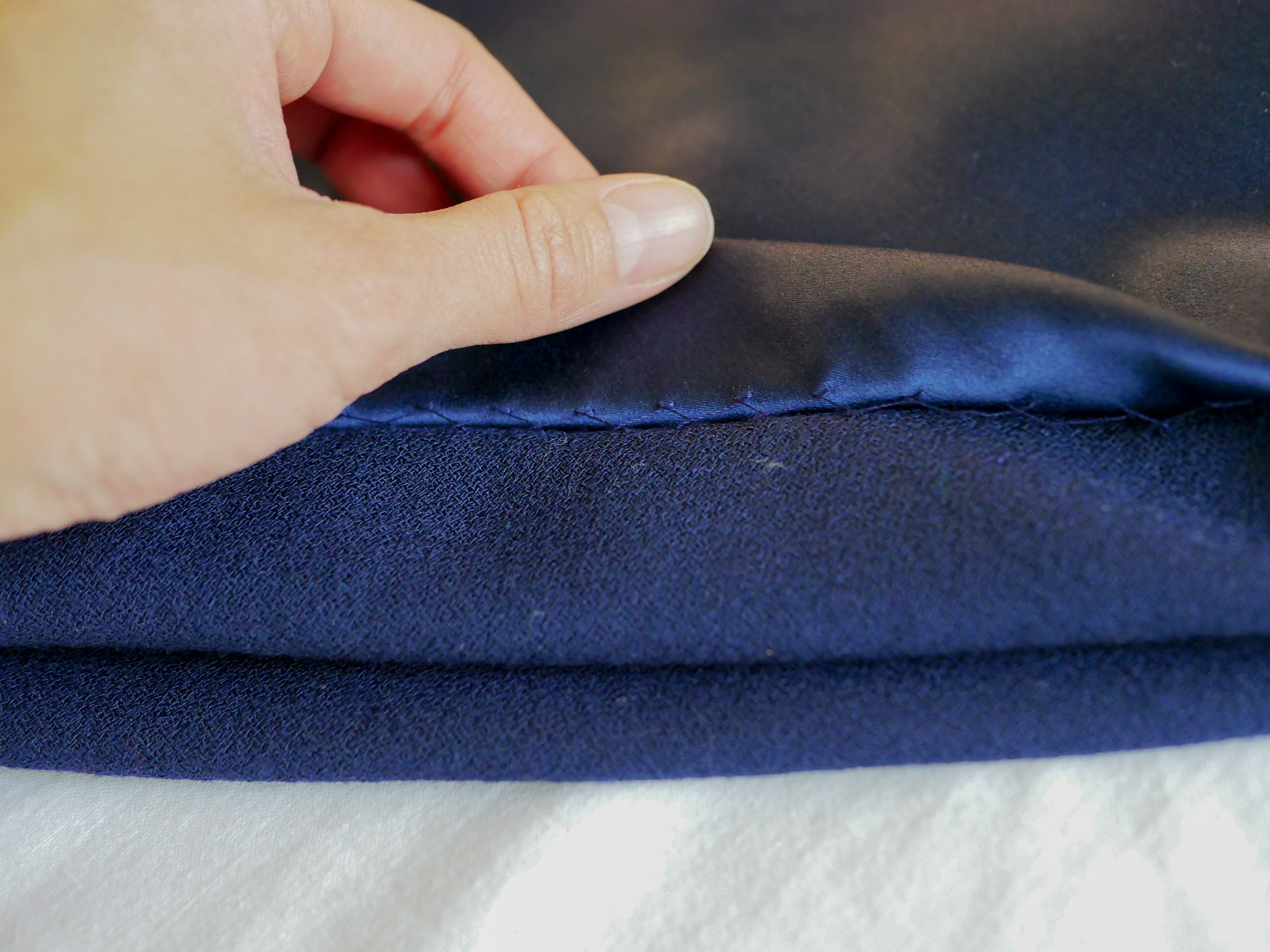
Fittings and toiles
Each of my clients has their own stand. Then its like I have them in front of me and I can build the garment with confidence.
(note – at this point Jon shows me a padded corset looking thing that goes over the stand and zips up!)
For tailored garments I make a toile on the stand just for myself which I use to cut the pattern. For dresses I work directly on the fabric as they they tend to be a closer fit. I want to use the fabric characteristics to create shape so I prefer not to use a hard fabric like calico for a toile. If I can avoid darts I will will.
At the first fitting I will tack the garment together with the odd bit machined. For example, the back seam, as this is unlikely to change. Then alterations can be done. The second fitting includes sleeves tacked, no lining. After that I finish the garment.
Over the years I have had all sorts of request which can be fun challenges. I was once ask to make a dress to go with a diamond brooch which also had yellow and brown colours in it. The best thing about couture is that I see it all the way through from initial conversation to final garment. I always deliver the final garment and put it on the client myself to make sure they are happy. This avoids the phone call in 3 days time telling me otherwise!
Hopefully you enjoyed reading that as much as I enjoyed talking to Jon. In the second part of the interview we talk about tailoring and home sewing – stay tuned for more!
Till next time,
Kate xx

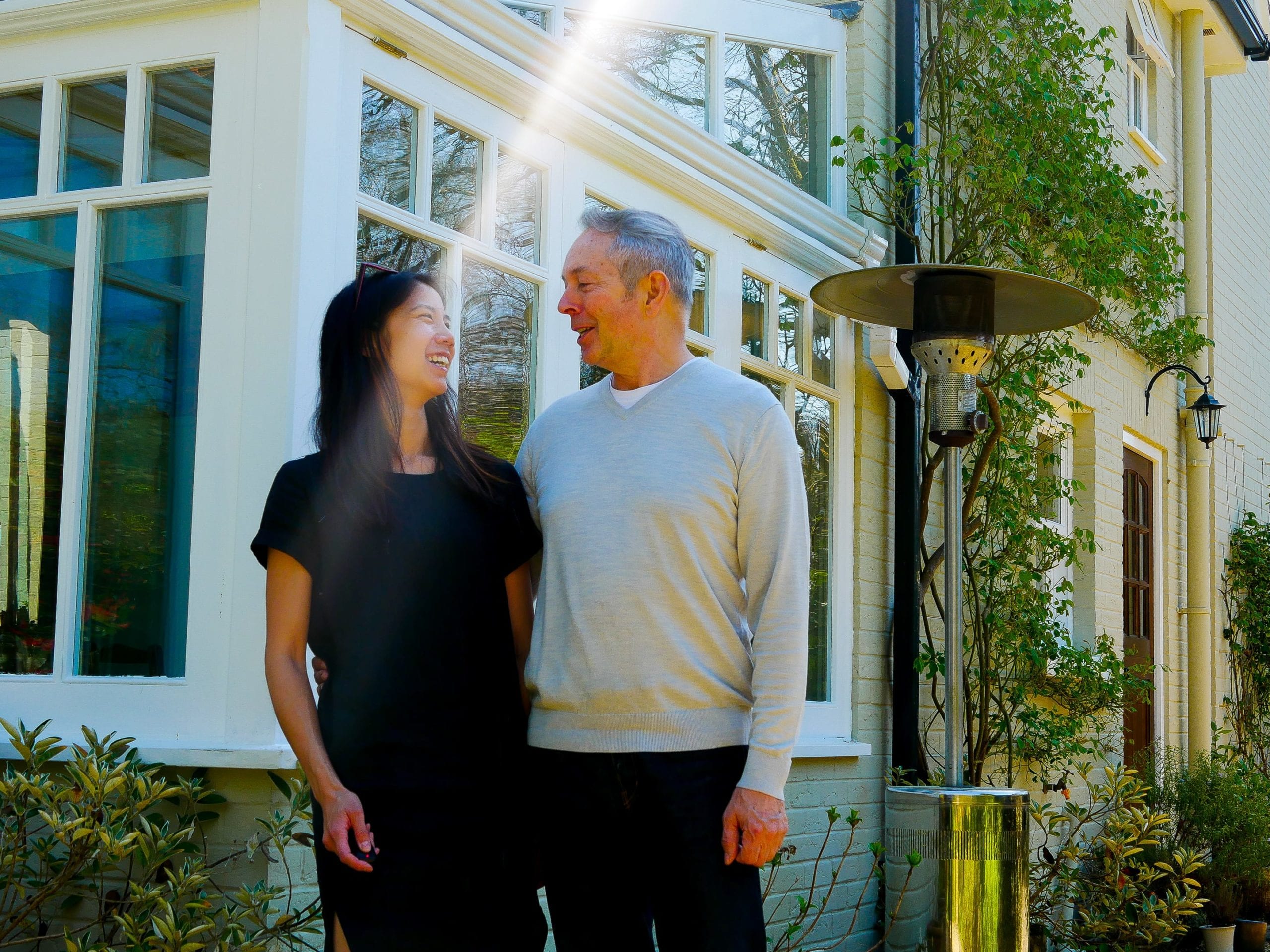
11 comments
Thx Kate for such an interesting piece !!!
You are very welcome! Glad you enjoyed reading it
Another fabulous and inspirational post Kate! Thank you. My take-away learning was to let the FABRIC decide what it will become by draping the fabric over a stand first. That might sound obvious but it wasn’t to me. Of course we all have to consider what fabric we’ll use to make up a garment (and often get that very wrong in the beginning) but starting with the fabric then going to the pattern makes a lot more sense than my normal approach of approaching the pattern then deciding what fabric I will use to construct it. I also gather my bottom hems using the differential feed on the serger before turning them up. It helps a lot!
Hi Kathleen, I think letting the fabric do the talking is a great idea, especially if you have a large fabric stash and a stand! (I don’t have a stand). My normal approach is to let the garment I have an idea for to stew away in my head, and then think about what I have in the stash. By the time I get to stash I already know what fabric. I have so many patterns that they don’t feature too heavily until I’ve decided the other stuff. Regarding the differential feed, I have never tried that but I am going to google a tutorial. I typically use bias binding around curves, but it takes a long time for garments that don’t need that kind of beautiful hard-work finishing (e.g. a summer shirt from cotton poplin).
Thanks for such an interesting post. I’ve been admiring Jon’s amazing work on Instagram for a while—it’s great to get the background!
Glad you enjoyed it, I also love seeing what the professionals do. Something to be admired for sure!
Thanks for providing a portal of insight into the couture world. I love reading about Jon. How amazing and dedicated. I am also very inspired by what you said – we should treat our home sewn garments as couture. They deserve to be!
Yes once you have the basic skills for sewing and can make a good quality good fitting garment, there is no reason why we can’t treat our own makes as carefully as you would a very expensive luxury one! I understand a cotton sundress isn’t the same as a tailored jacket but we can still care for it and love wearing it… and of course try and make it last
Kate this was one of the best sewing related pieces that I have read in a long time! Absolutely jaw-dropping. Thank you for doing this interview and taking the time to write this. I used to love reading about all of these things when I was in school. It’s a wonderful insight into another world.
Where is part 2? Great read!
Coming! I have a load of interviews to write up, please bear with me!